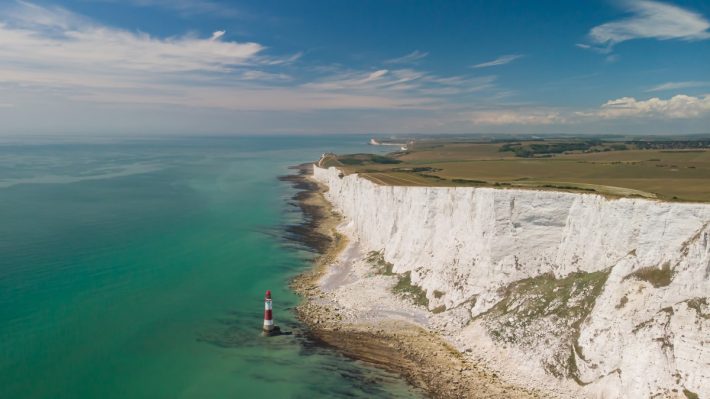Protected areas can be the beating heart of nature recovery in the UK, but they must be more than lines on a map

A report by the British Ecological Society says that the UK government’s commitment to protect 30% of land and sea by 2030 offers the opportunity to revitalise the contribution of protected areas to nature recovery. But it also warns that this ambitious pledge will fail if we don’t make radical, transformative changes.
The UK government has committed to protecting 30% of the UK’s land and sea to support nature recovery by 2030. The report welcomes this target, as failure to achieve it could result in continued and irrecoverable declines in biodiversity.
The BES’s Protected Areas and Nature Recovery report looks at the role protected areas play in supporting nature and determines what is needed to meet the ‘30×30’ target.
The 30×30 target presents such a good opportunity that we can’t let is pass us by
Although the ‘30×30’ target seems close to being achieved, with 27% of UK land and 38% of UK seas under some level of protection, the report finds that many protected areas are not delivering for nature and are in poor ecological condition.
The report therefore urges caution over what should count towards the ‘30×30’ target and provides recommendations for what protected areas, and the surrounding environment, need in order to be effective in restoring nature.
Dr Joseph Bailey at York St John University and lead author of the report said: “Designating an area of land or sea does not automatically make it an effective protected area. Designation is simply the first step in a long process towards ensuring that long-term ecological benefits are delivered for nature and people. To be effective, a protected area needs adequate implementation, enforcement, monitoring, and long-term protection.”
Dr Bailey added: “The 30×30 target presents such a good opportunity that we can’t let is pass us by, especially in the face of a changing environment and a future in which we will need resilient ecosystems.”
Protecting the land
National Parks, Areas of Outstanding Natural Beauty and other protected areas currently make up 27% of UK land. However, the report finds that the proportion of land that is effectively protected for nature could be as low as 5%.
With the right support and willingness, nature can recover and thrive in almost any landscape
Many protected landscapes, such as National Parks, do not specifically prioritise biodiversity and were not established or funded to do so. The report recommends that these areas should not be included in the ‘30×30’ target in their current state.
Professor Jane Hill at the University of York and author of the report said: “The evidence is that most protected landscapes are not delivering for nature and only a low percentage are in good ecological condition. However, because there is existing governance in place managing these landscapes, they have great potential to be adapted to improve how they deliver for nature.
“With the right support and willingness, nature can recover and thrive in almost any landscape. If the objectives of protected landscapes like National Parks and Areas of Outstanding Natural Beauty can be reformed to ensure that they deliver for nature in the long-term, they could then count towards the ‘30×30’ target.”

Protecting the seas
On paper, marine environments seem better protected than UK landscapes with Marine Protected Areas (MPAs) already exceeding the government’s target and covering 38% of UK seas. However, many of these areas have no current management measures in place and most areas closed to fishing are in UK overseas territories.
While regulations to control fishing are in place in some MPAs, across the entire UK only three small MPAs ban all fishing activity. Damaging fishing activity from large bottom trawlers is still unregulated in many MPAs across the UK.
Rick Stafford of Bournemouth University and author of the report said: “The proposal to protect 30% of UK seas is very welcome, but we need effective management measure in place in Marine Protected Areas which will protect wildlife and benefit local coastal communities.
“The lack of comprehensive management or enforcement means that the majority are failing to deliver for nature and bring the full range of biodiversity benefits they otherwise could.”
What should count towards the ‘30×30’ target?
For protected areas to deliver for nature and be included in the ‘30×30’ target, the report recommends the following criteria:
- Protected areas must be managed to deliver for nature in the long term, using evidence-based approaches.
- Protected areas should have effective governance to address pressures such as climate change, pollution, and damaging fishing activities.
- Have monitoring in place that informs the long-term management of protected areas so that they meet conservation goals. This will require substantial and sustained funding and resourcing.
- Protected areas should be inclusive to benefit local people and ensure buy-in. The governance of protected areas should involve local communities in partnership with landowners, NGOs, researchers, government agencies, and other stakeholders.
Nobody should lose out to something benefiting nature
Dr Paul Sinnadurai of the Brecon Beacons National Park Authority and Cardiff University, and author of the report said: “Protected areas have suffered from not having enough resources and having to make too many compromises. This has left them in a position where they are not doing enough to support nature.
“To turn this around, money and resources need be made available for consistent monitoring. During the late 1990s and early noughties, there was a good advance in the use of the Common Standards for Monitoring in protected areas, but momentum wasn’t maintained in this essential practice because it is resource intensive.
“For effectively protected areas to be successful, they must also be inclusive. To do this we need to have conversations with landowners and local people and ensure nature recovery works for everyone. Nobody should lose out to something benefiting nature.”
Protected areas are not enough on their own
Despite the enormous potential of protected areas, they cannot protect nature on their own. Landscapes surrounding protected areas are also vitally important, particularly with species ranges shifting in response to climate change.
The report details how other effective area-based conservation measures (OECMs) – areas outside of designated protected areas that are managed in a way to support nature – can complement protected areas and provide an essential contribution to nature protection and recovery.
Dr Bailey said: “We need to make sure landscapes are suitable for species to move between highly protected areas. This could be done with wildlife corridors such as hedgerows. Protected areas simply won’t work if the spaces in between them are not working towards the same goals.”
Like what we stand for?
Support our mission and help develop the next generation of ecologists by donating to the British Ecological Society.